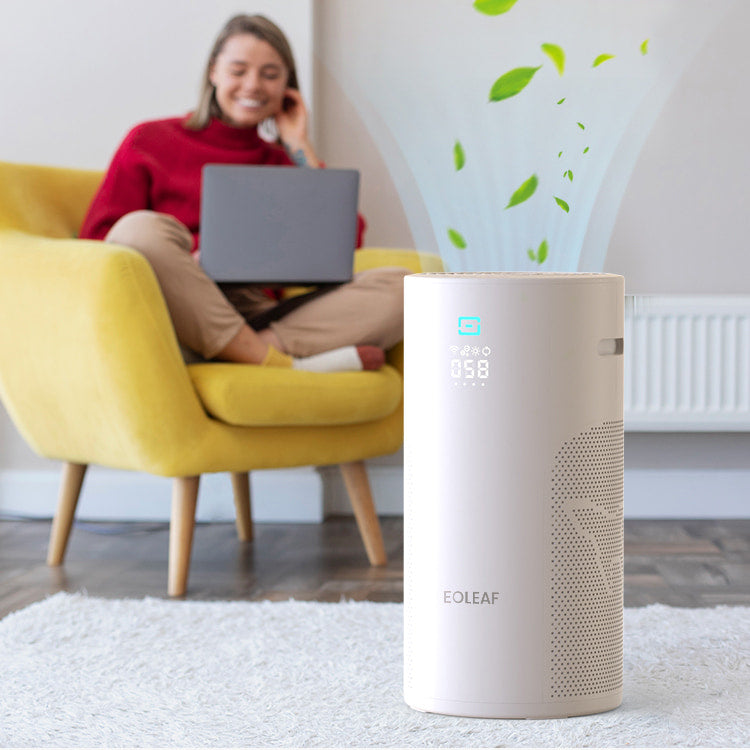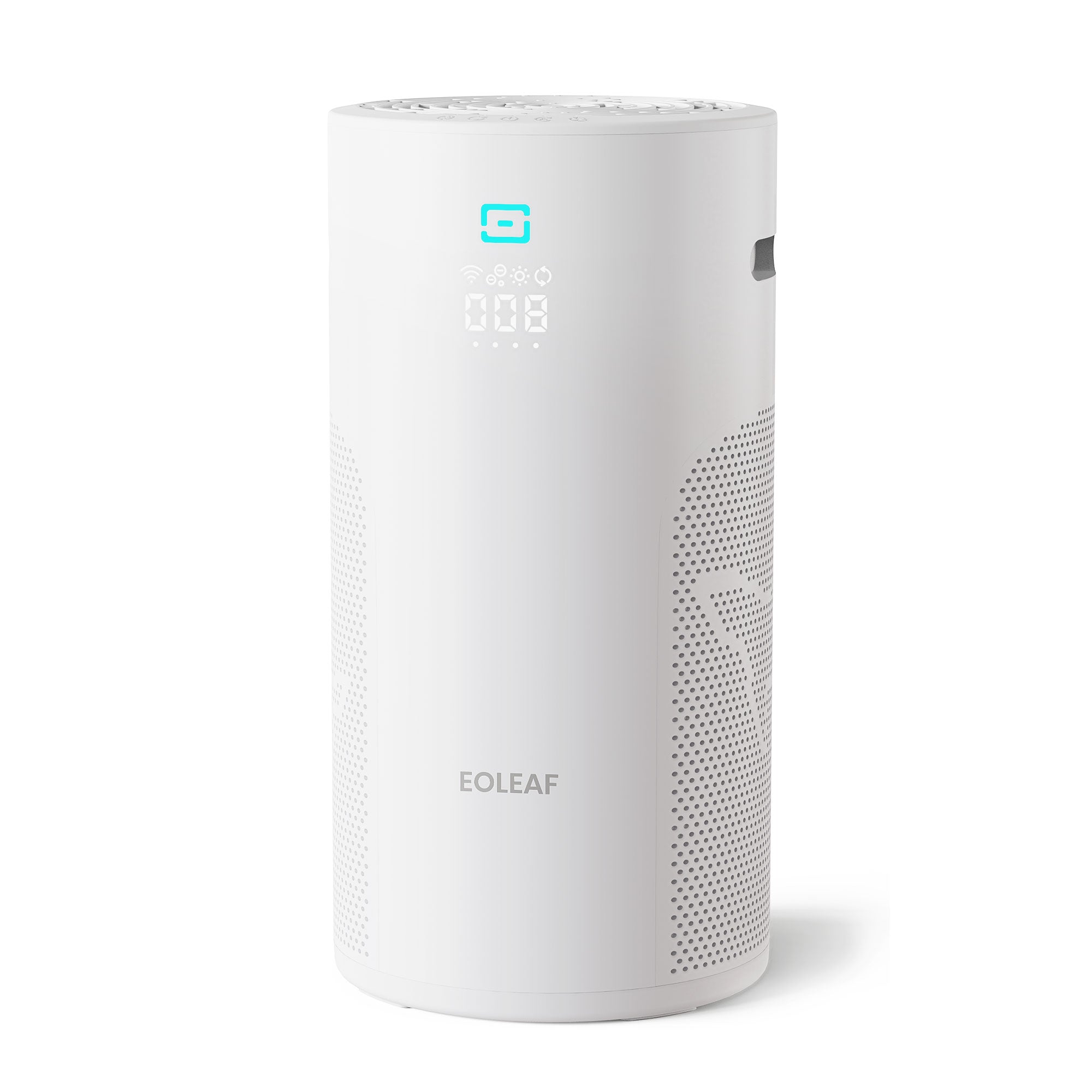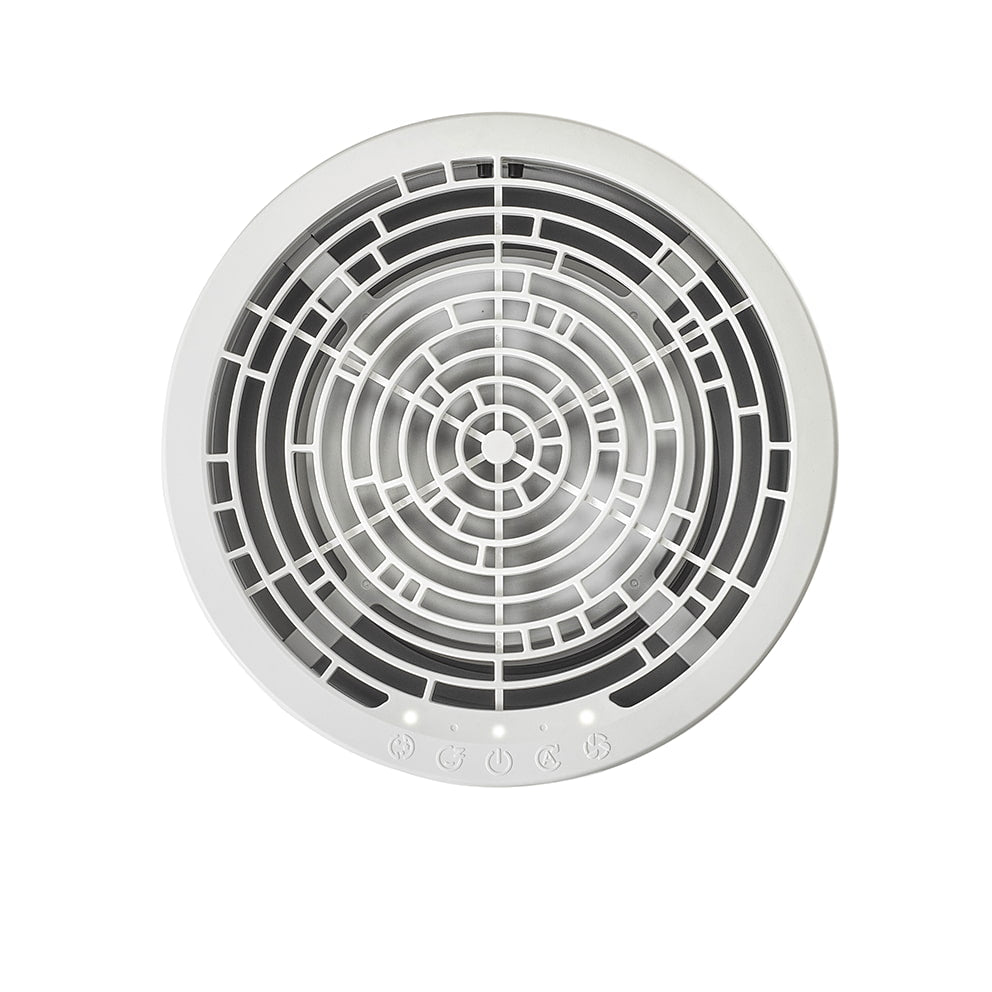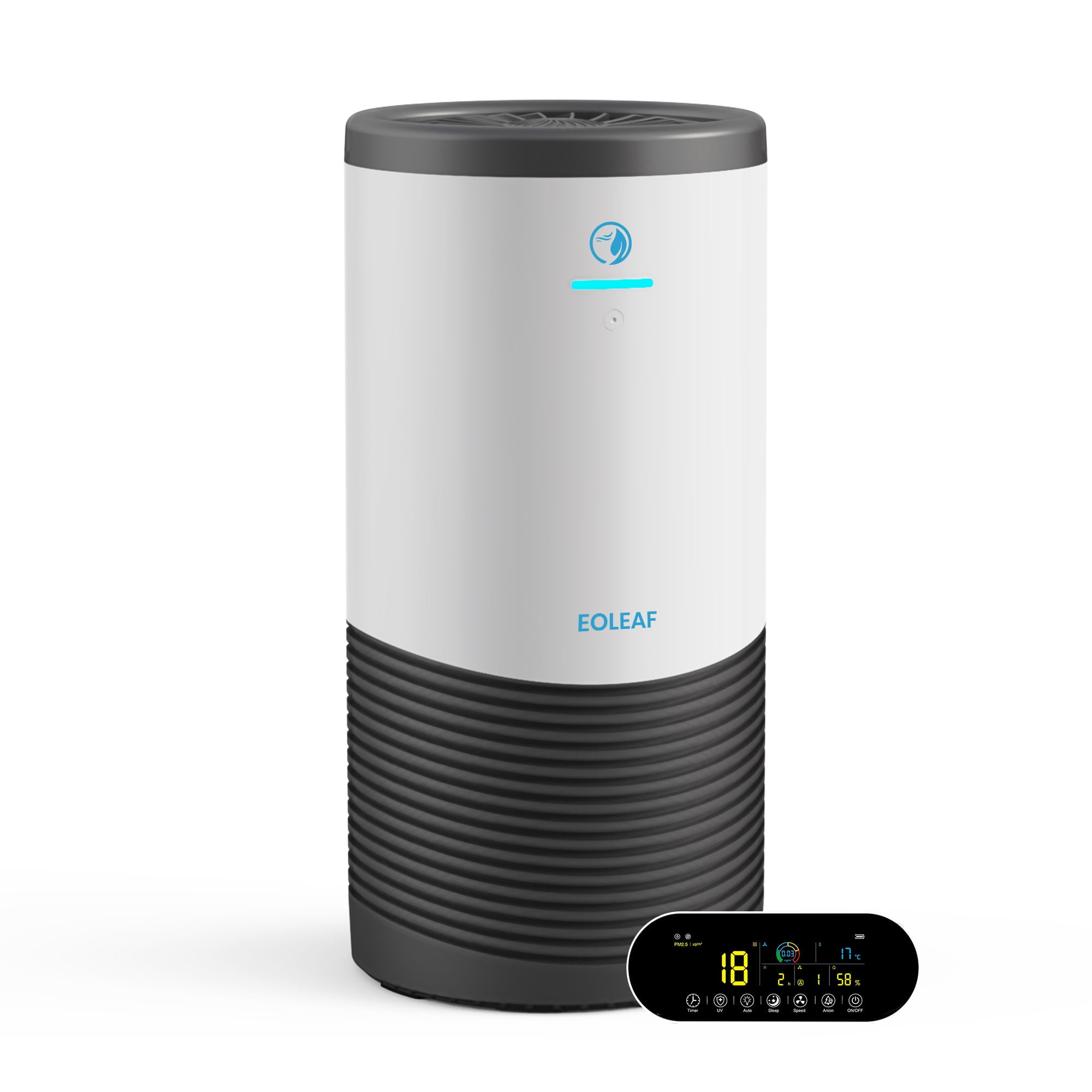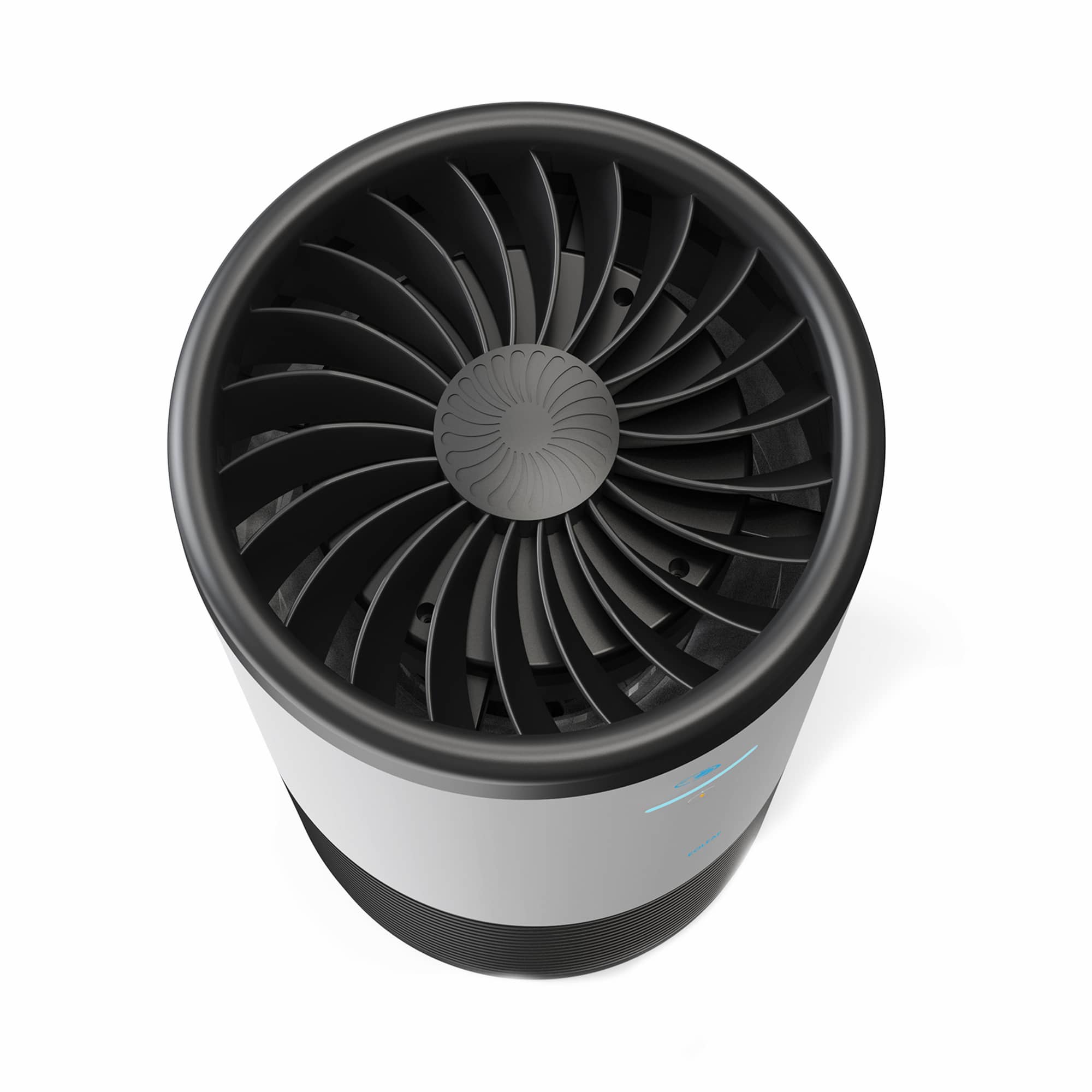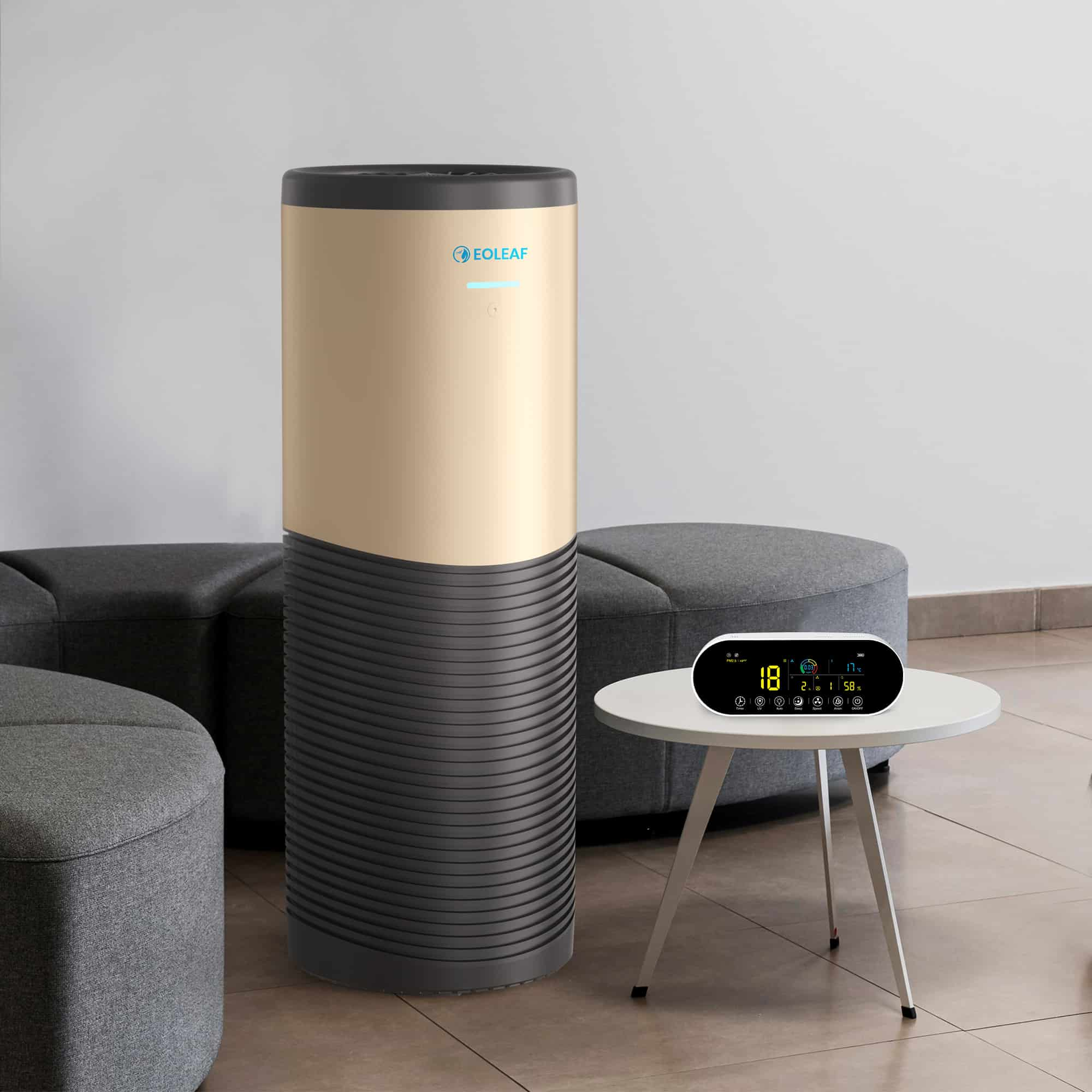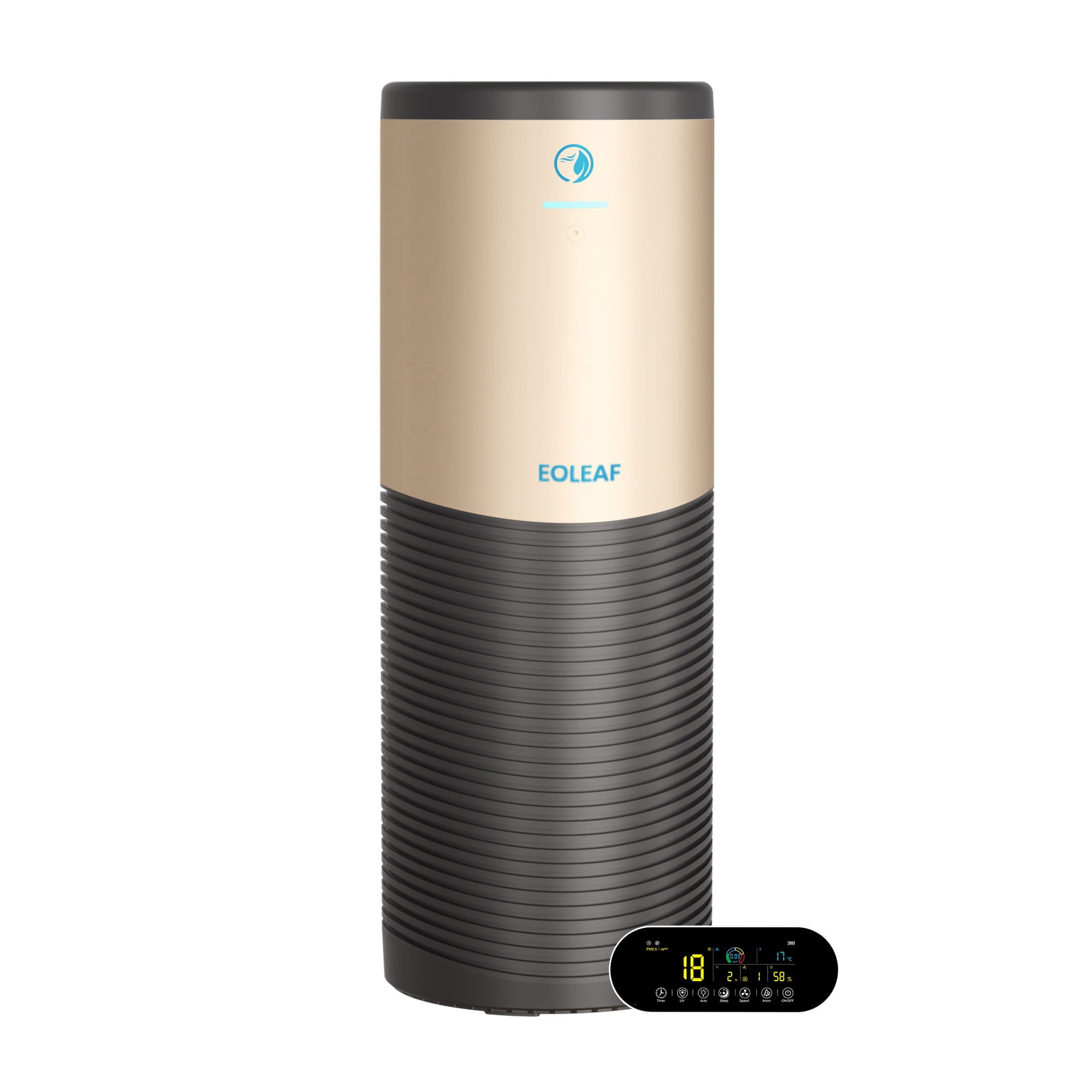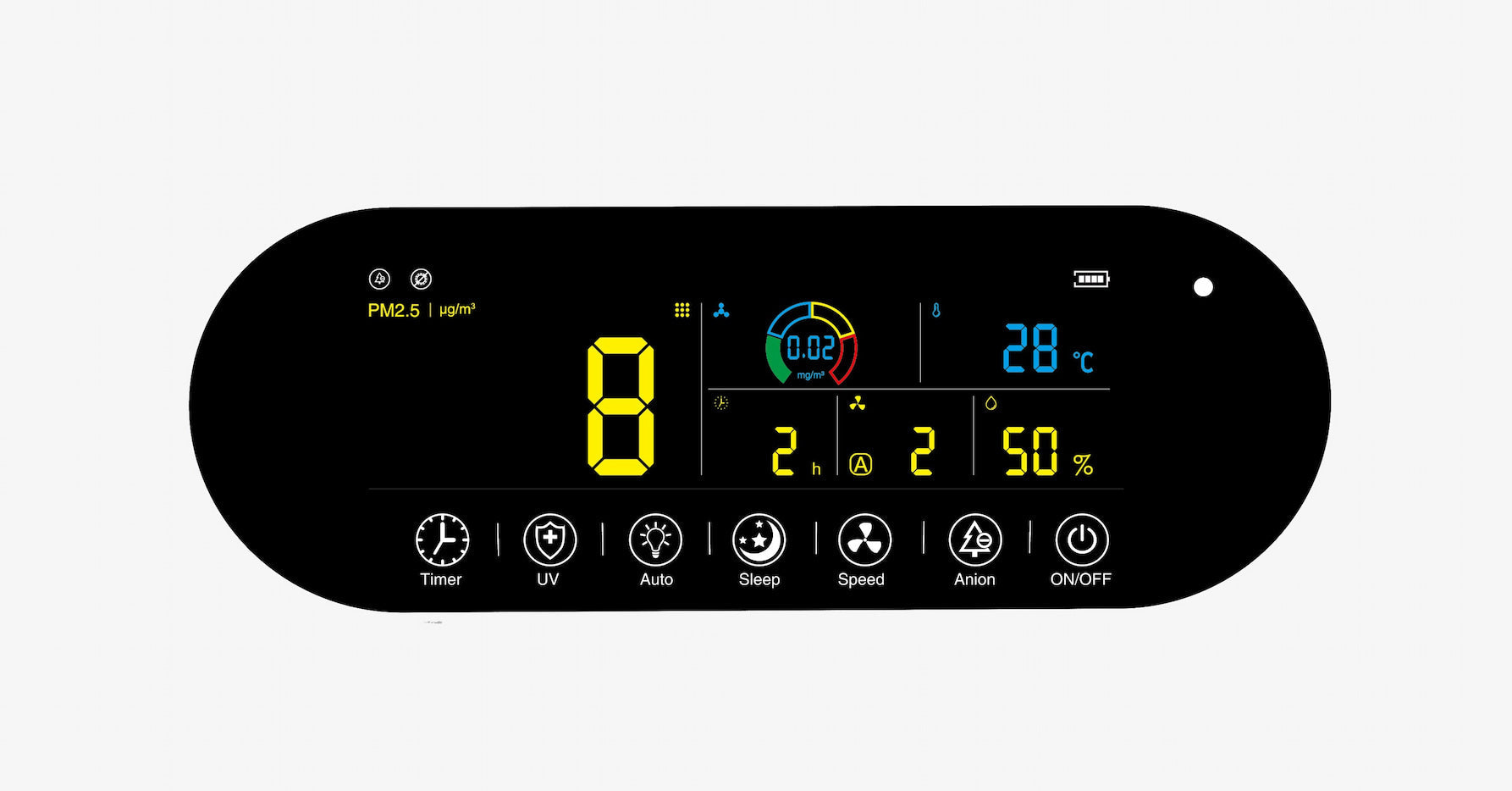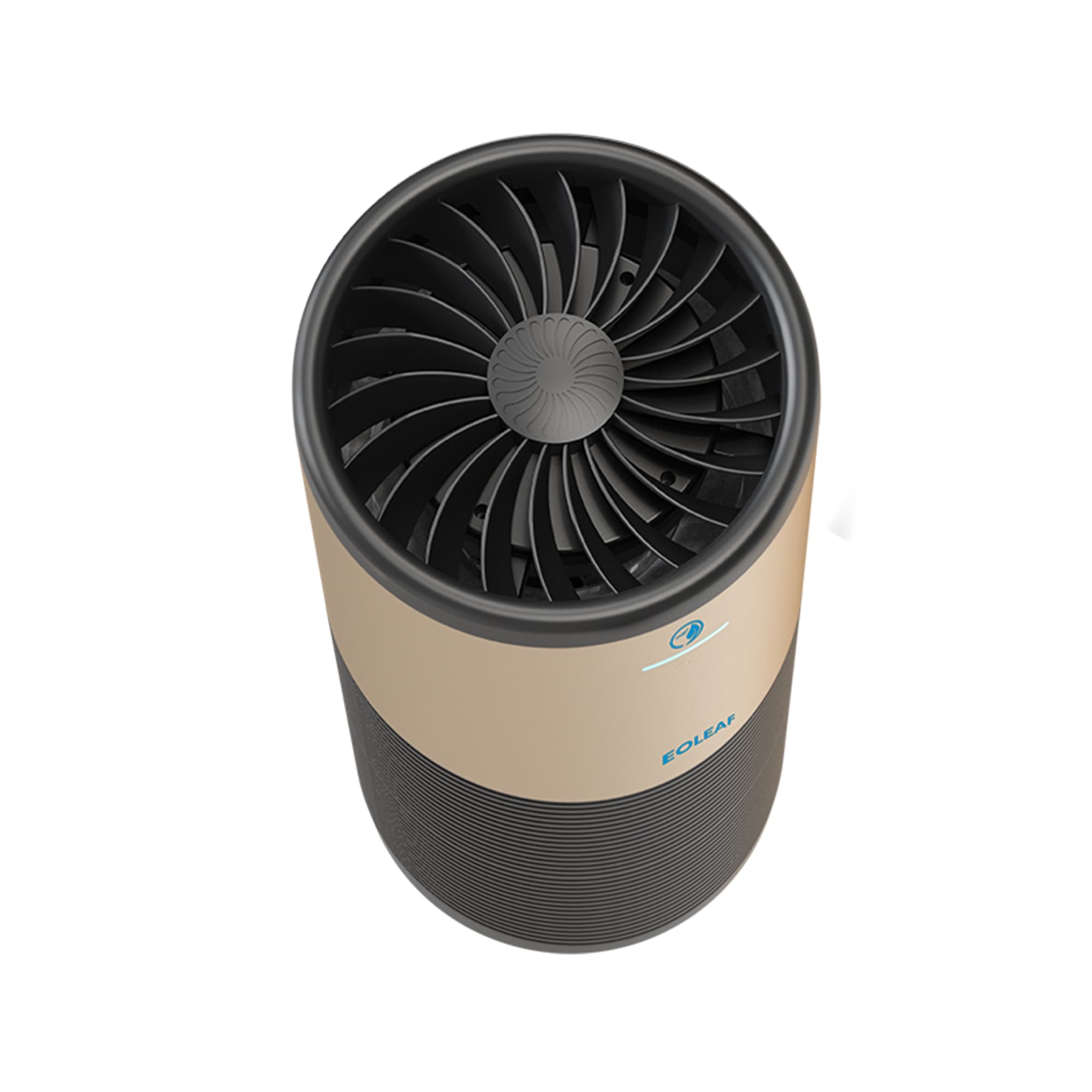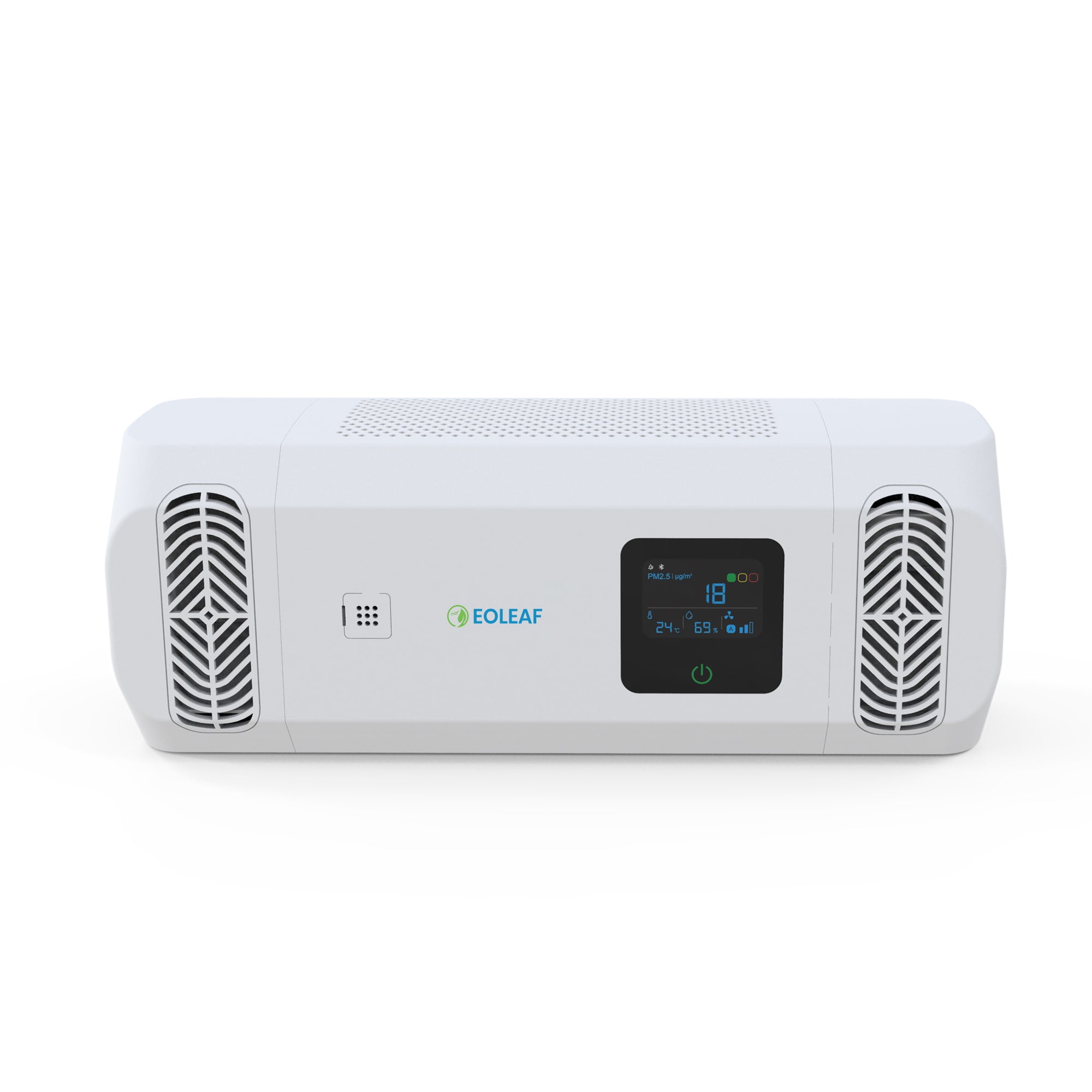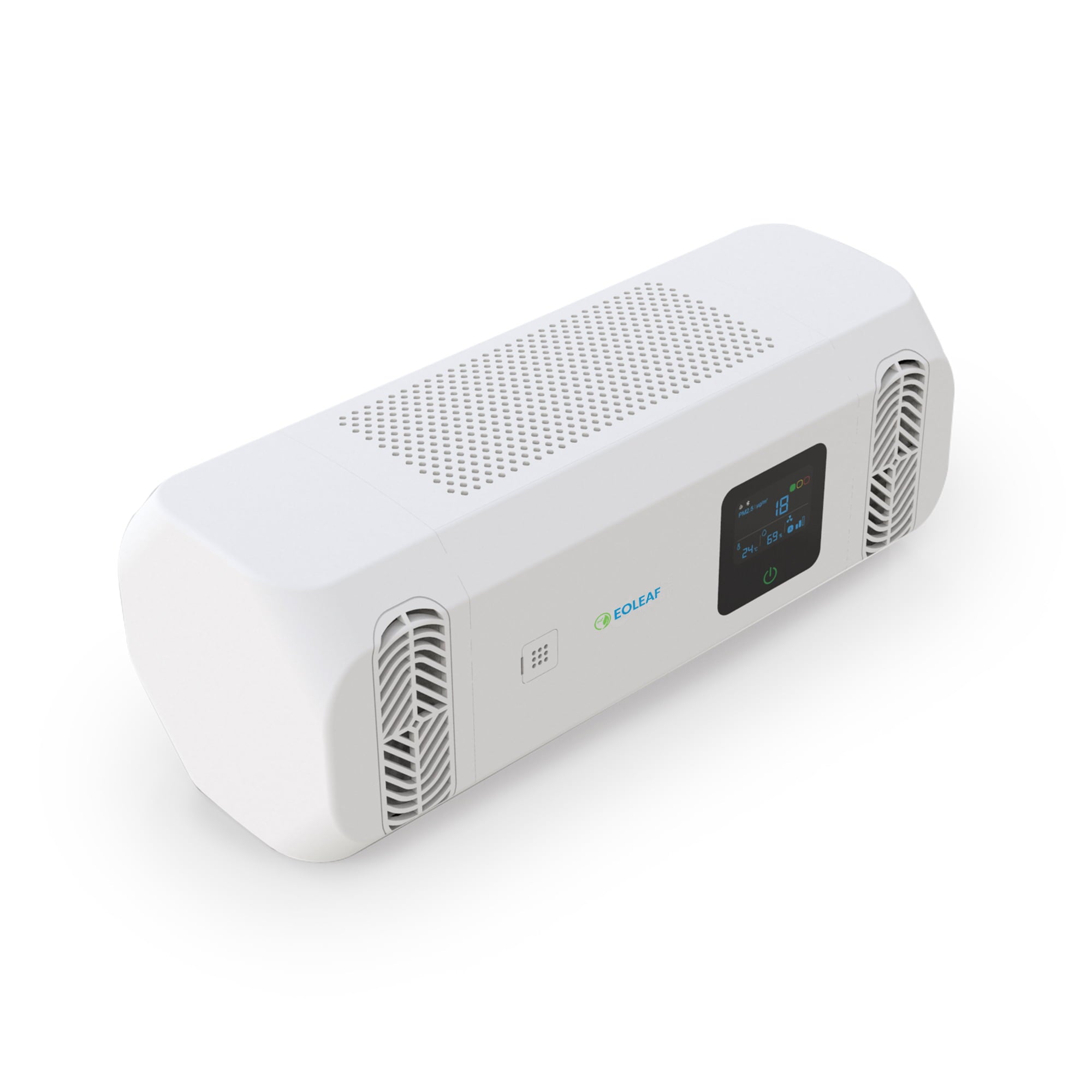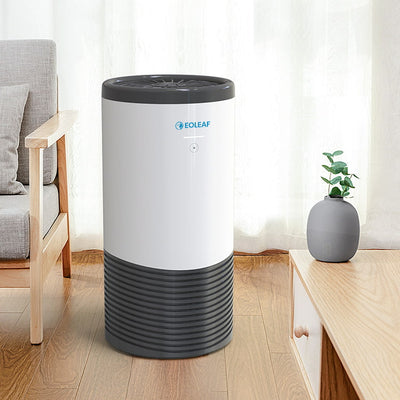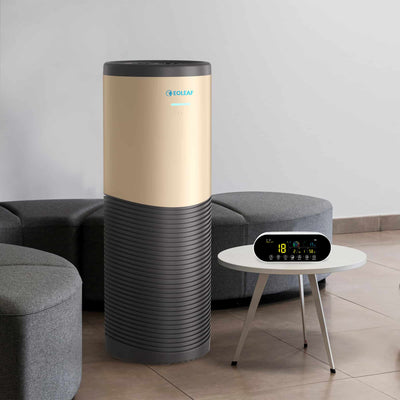Buying an air purifier for yoga studios
Gyms and health centres are notorious for their poor air quality. The density of humans in one place performing physical activities contributes significantly to poor air quality, but it is also the materials that are used in health centres that emit harmful chemicals into the air that are dangerous for your health. Yoga studios are no exception, and sometimes the use of essential oils and other seemingly natural fragrances may further degrade indoor air quality. Which types of indoor air pollution do you typically find in yoga studios? Can an air purifier for yoga studios help? Read on to learn more.

Why air quality matters in a yoga studio
The impact of air quality on yoga practice
Indoor air pollution is deceiving. Every breath we take is influenced by the quality of the air. This is even the case in yoga studios that are places associated with calm and well-being: we typically observe spotless floors, soft lighting, and the gentle aromas of essential oils. Purified, pollution-free air is crucial for an effective yoga practice since the air you breathe affects how well you can unwind, concentrate, and connect with each pose.
In any enclosed area, indoor air quality is crucial, but it's especially important in a yoga studio where many people breathe the same air and deep breathing is the aim. The peace and relaxation you feel during your yoga practice might be disturbed by poor air quality, which can impede oxygen flow, make breathing exercises uncomfortable, and even cause respiratory problems.
For more intensive physical activity, like hot yoga, for example, studies have shown that PM10 concentrations surpass the WHO’s recommended threshold by 1.1 to 4.4 times. The same holds true for PM2.5 concentrations which surpass the recommended threshold by 1.1 to 2.5 times. VOC concentrations also exceed thresholds by 4 to 18 times. Certain factors impact indoor air pollution concentration levels in yoga studios including degree of exertion during yoga practice, ventilation, occupancy, and whether or not participants store their personal belongings in the same space (which may further expose other participants to allergens like pollen, dust, dust mites, and pet dander), to name a few1.
Common air pollutants found in yoga studios
In health centres and gyms where people perform physical activities that cause deeper and faster breathing, users of these spaces are exposed to more air pollution because they simply breathe in more air. Some of the following air pollutants are often found in yoga studios:
- VOCs like formaldehyde, nitrogen dioxide (NO2), sulphur dioxide (SO2), ozone (O3), carbon monoxide (CO), and carbon dioxide (CO2)
- Fine particle pollution (PM10, PM2.5, and PM0.1)
- Airborne germs
- Allergens like pollen, pet hair and dander, dust, and dust mites
- Odours of sweat and airborne chemicals
- Essential oils, which have unfortunately been found to be a form of air pollution7
- Mould spores in more humid environments2
In essence, anytime you have a group of individuals together performing exercise in an enclosed space, indoor air pollution (especially CO2 and airborne pathogens) is bound to accumulate. However, the materials used in yoga studios themselves are also a significant source of different types of air pollution: mats, equipment, building materials, paints, cleaning products, personal care products, and more. In yoga studios, air fresheners and scented products like essential oils are often diffused throughout the space, causing an increase in VOC concentrations1. Some of these pollutants are carcinogenic including formaldehyde and benzene, two very common VOCs found in fitness centres like yoga studios.

Source 3
Health risks associated with poor indoor air quality
Each type of air pollutant has varying effects on human health. Physical exertion through exercise has shown to lead to a 4.5-fold increase in lung deposition of pollutants, and an increase in mouth-breathing during physical activity means that the body’s natural nasal filtration mechanism for larger pollutants is bypassed, allowing more pollutants to access the lower respiratory tract1.
Volatile organic compounds (VOCs)
VOCs are responsible for ‘toxic, carcinogenic, mutagenic, or neurotoxic properties’4. Studies have linked exposure to VOCs in the short- and long-term to be responsible for adverse health effects including eye, nose, and throat irritation; headaches; nausea; and loss of coordination (short-term) and damage to the nervous system, liver, and kidneys (long-term). As previously mentioned, some VOCs are carcinogenic, including formaldehyde and benzene.
Particulate matter
PM2.5 has earned the reputation of being the most dangerous form of air pollution when it comes to its effects on human health. All fine and ultrafine particles that are smaller than 10 microns (PM10 and smaller) cause inflammation in many systems of the human body. They gain entry through the respiratory system (when inhaled), and due to their small size, they are able to translocate to other organs in the body including the heart and brain. Studies have linked particulate matter exposure to a variety of adverse health conditions including premature death for vulnerable individuals, decreased lung function, increased hospital admissions for heart and lung disease symptoms, increased incidence of asthma attacks, and an increased risk of multiple types of cancer, especially lung cancer5,6. Preliminary studies are also finding that particulate matter exposure leads to an increase in mental health conditions like anxiety and depression, decreased productivity and performance, and an increased risk of developing diabetes mellitus, among other conditions.
Carbon dioxide
Elevated levels of carbon dioxide in indoor spaces has long been an indicator of poor air quality. However, recent research has found that elevated carbon dioxide concentrations (starting at just 1000 ppm) may have a direct effect on health including reduced decision-making abilities, lower test scores, increased stress levels, and impacted sleep quality.

How an air purifier can improve the environment in your yoga studio
The science behind air purifiers
Air purifiers are fairly simple: using a powerful fan, they pull polluted air into the device, treat it with one or more air purification technologies, and release the purified air back into your space. This process is repeated until the purified air dilutes the polluted air and ultimately replaces polluted air completely with purified air.
The science behind air purification technologies themselves is a bit more complex. Even the most basic air purifiers will come equipped with a fine particle filter (HEPA-certified or HEPA-type) and a gaseous pollutant filter (typically consisting of activated carbon). These technologies vary significantly in quality depending upon the brand and model of air purifier.
HEPA filters
In reference to fine particle filters, it is recommended to seek out a device with a HEPA-certified filter (medical-grade H13 or better). Certification means that a third-party has verified the device for its filtration capacity and quality. Ideally, the device should have at least a HEPA H13 grade that is guaranteed to remove 99.97% of all fine particles down to 0.3 microns in a single pass. HEPA-certified filters target fine particles emitted by road traffic, smoke, allergens, mould spores, and more. Eoleaf’s devices are all equipped with HEPA H13-certified filters.
Activated carbon filters
The quality of activated carbon filters also vary significantly. The heavier the activated carbon filter, the more efficient it is as filtering gaseous pollutants like VOCs and odours. Some brands will put the bare minimum amount of activated carbon into their activated carbon filter which severely reduces its quality. Before purchasing an air purifier for a yoga studio, be sure to ask the air purifier’s manufacturer for its technical specifications, especially the size and weight of its activated carbon filter. This information is often not made public, but Eoleaf proudly makes all of this information readily available to its customers and can be found here.
Other essential technologies
The more technologies found in your air purifier, the more it will protect you from the multitude of air pollutants found in your indoor air!This is why Eoleaf devices offer an impressive 8 steps in its air purification technology. In addition to the above-mentioned technologies, our devices also include the following essential technologies:
- UVC sterilisation for combatting airborne germs and for sterilising your filter (a crucial technology in avoiding recontamination during filter changes!)
- Photocatalysis for further combatting complex chemical pollution and gases like volatile organic compounds (VOCs)
- Ionisation which targets fine and nanoparticle pollution, especially those generated by smoke and dust

The benefits of using an air purifier in a yoga studio
Air purifiers bring substantial benefits for both practitioners and instructors in yoga studios. Reducing air pollutants like allergens and dust with an air purifier prevents inhalation and respiratory irritation, creating a more comfortable environment for those suffering from allergies. Filtering out particulate matter and harmful gases protects yoga studio users from harmful health effects of these air pollutants, improving peace of mind and reducing the likelihood of developing the many health impacts caused by these harmful compounds.
Cleaner air allows practitioners and instructors to breathe more deeply, further enhancing the benefits of pranayama, or yogic breathing exercises. Clean air improves oxygen circulation in the body which reduces fatigue, focus and concentration, and peace of mind.
Furthermore, a high-performance air purifier combats airborne germs (viruses and bacteria) and odours caused by sweat, cleaning supplies, essential oils, air fresheners, and other sources.
Debunking myths about air purifiers in yoga studios
Do air purifiers make the air too dry?
No. Air purifiers do not alter the humidity levels in your space. This is the role of either a dehumidifier or humidifier. Air purifiers simply combat pollutants found in your indoor air.
Can they remove all viruses and bacteria from the air?
This answer really depends upon the model of air purifier. Eoleaf devices are equipped with a medical-grade HEPA H13 filter, and this, along with its other technologies, remove 99.97% of all air pollutants down to a size of 0.01 microns in a single pass, including viruses and bacteria. Combined with our UV sterilization technology, this helps eliminate all airborne germs, but this is not the case with all air purifiers, far from it.
Are air purifiers noisy and disruptive during meditation?
Air purifiers should be powerful but quiet so as not to disturb users of the space. They should also be properly sized in order to ensure that they do not work harder than they need to, causing an increase in noise level. Eoleaf devices never exceed 60 dB at their fastest fan speeds (which is only used in the case of heavy indoor air pollution), and at their daily fan speeds, they are no louder than a whisper, ensuring tranquility during your yoga practice and meditation.

Choosing the right air purifier for your yoga studio
Key features to look for in an air purifier for yoga spaces
The best way to combat indoor air pollution is to invest in an air purifier for yoga studios that will target and filter out the three types of air pollution: chemical pollution (VOCs and other harmful gases), fine particle pollution (particulate matter), and biological pollution (allergens and germs). As mentioned above, Eoleaf’s 8-step air purification technology does exactly that. Each step of filtration specialises in the removal of different pollutants, providing you with fresh air that will have practitioners and instructors breathing the freshest air available all throughout your yoga sessions.
When choosing your air purifier for yoga studios, it is essential to ensure that it is properly sized to your yoga studio’s space. Eoleaf devices are sized as follows:
- NeoPur 400: yoga studios up to 40 m2 (450 sq. ft.)
- TeraPur 600: yoga studios up to 80 m2 (850 sq. ft.)
- AltaPur 700: yoga studios up to 120 m2 (1300 sq. ft.)
Additionally, the air purifier for your yoga studio should be powerful but silent for undisturbed yoga sessions and energy efficient, too!
How to determine the best placement for an air purifier
Proper placement of an air purifier can increase its efficiency by 20%! When installing an air purifier, avoid placing it too close to furniture or fixtures that may impede its air flow. It is recommended to avoid corners or placing it next to a wall: installing an air purifier 10 cm (4 in) from a wall ensures an air purifier’s air flow of 100%. Also avoid placing it next to heating or cooling systems as drastic temperature changes may impact an air purifier’s delicate filter mesh. Read more about optimal air purifier placement here.
Air purifiers vs. natural ventilation: do you need both?
In a perfect world, the answer would be a resounding ‘yes’ because ventilation brings in fresh oxygen! Unfortunately, this is not always a possibility, especially for yoga studios set in urban environments. One may think that opening windows and doors is the best way to circulate air in an urban yoga studio, but this is only true if the air outside does not contain air pollution! For urban yoga studios, the polluted outdoor air (caused mainly by road traffic but also by polluting industrial activities) easily gains entry into the studio when doors or windows are opened. It may also be difficult to sufficiently air out your yoga studio during periods of extreme weather (heat, cold, snow, rain, etc). Security may also be an issue for some urban yoga studios: opening windows and doors may invite unwanted attention.
In summary, yes, it would be ideal to have both an air purifier and natural ventilation, but in areas where this is difficult due to any of the above reasons, an air purifier alone will help keep your air free of air pollution.
Why Eoleaf is the best solution for your yoga studio’s indoor air quality
As a brand of high-performance air purifiers, we equip many gyms, yoga studios, SMEs and even medical practices. With air purifiers for yoga studios falling everywhere on the price and quality spectrum, it may feel overwhelming for the consumer to make the right choice. Here at Eoleaf, we are not just another multinational electronics conglomerate: we are a mighty team of engineers and air purification specialists with your health in mind. When looking to protect the health of those in your yoga studio, whether it be practitioners or instructors, it is important to choose an air purifier with the best quality to cost ratio. Our devices offer the most comprehensive air purification on the market, so rest assured that, with Eoleaf, your yoga studio’s air is in good hands. Our compact air purifiers for yoga studios offer powerful filtration and are high-capacity devices for even the most spacious yoga studios.

Resources
1 Peixoto, C., Pereira, M. do, Morais, S., & Slezakova, K. (2025). Inhalation exposure to indoor air pollutants during moderate- and high-intensity physical exercise in commercial fitness microenvironments. Building and Environment, 278, 112967. doi:10.1016/j.buildenv.2025.112967
2 Peixoto C, Pereira MDC, Morais S, Slezakova K. Assessment of indoor air quality in health clubs: insights into (ultra)fine and coarse particles and gaseous pollutants. Front Public Health. 2023 Nov 28;11:1310215. doi: 10.3389/fpubh.2023.1310215. PMID: 38089025; PMCID: PMC10715262.
3 uBreathe. (2024, November 9). Is your yoga studio’s Air Quality Holding You Back? discover ubreathe solutions! uBreathe Purifiers. https://www.ubreathe.in/post/is-your-yoga-studio-s-air-quality-holding-you-back-discover-ubreathe-solutions?srsltid=AfmBOoq2Jy7pbpoeE-d5zsTPM_xD-eF1r0rS_ZccxidfMTCVkTRNgKgB
4 Peixoto, C., Pereira, M. do, Morais, S., & Slezakova, K. (2025a). Inhalation exposure to indoor air pollutants during moderate- and high-intensity physical exercise in commercial fitness microenvironments. Building and Environment, 278, 112967. doi:10.1016/j.buildenv.2025.112967
5 California Air Resources Board. Inhalable Particulate Matter and Health (PM2.5 and PM10) | California Air Resources Board. (2023). Retrieved April 25, 2023, from https://ww2.arb.ca.gov/resources/inhalable-particulate-matter-and-health
6 International Agency for Research on Cancer, World Health Organization. (2016). Outdoor Air Pollution. https://publications.iarc.fr/538 (Vol. 109). Retrieved April 25, 2023.
7 Essential oils: risks and precautions. Anses. (2025, February 27). https://www.anses.fr/fr/content/huiles-essentielles-risques-et-precautions

